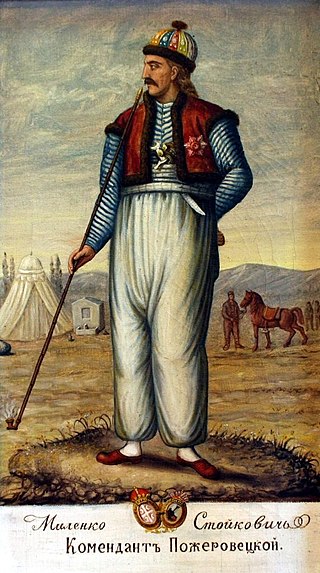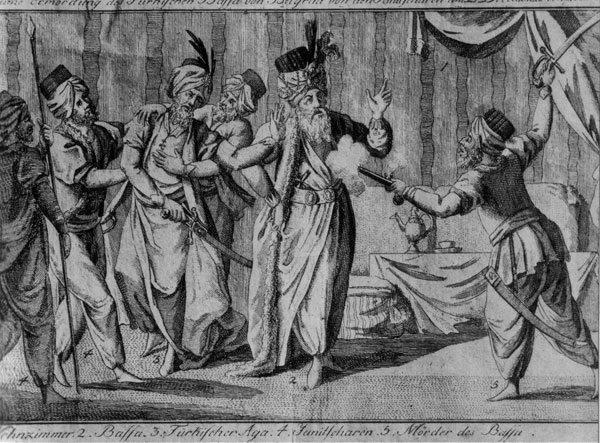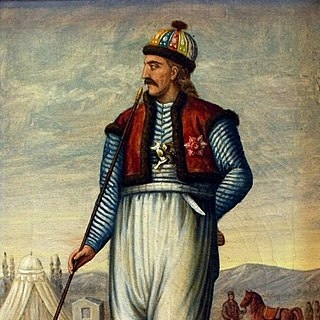OUR BLOG
MILENKO STOJKOVIC
SERBIAN DIPLOMATS
 Milenko Stojković, better known as Duke Milenko, was one of the most controversial leaders of the First Serbian Uprising, who greatly contributed to the achievement of state independence. He was born in 1769 in the village of Kličevac near Požarevac, and in the nearby Nimnik monastery, he learned the letters and learned the trade of Tersia, sewing folk costumes in his respectable and modern shop.
Milenko Stojković, better known as Duke Milenko, was one of the most controversial leaders of the First Serbian Uprising, who greatly contributed to the achievement of state independence. He was born in 1769 in the village of Kličevac near Požarevac, and in the nearby Nimnik monastery, he learned the letters and learned the trade of Tersia, sewing folk costumes in his respectable and modern shop.
Uprising
However, after the murder of Hadži Mustafa Pasha, at the end of 1801, when the dahijas began liquidating prominent Serbs, Milenko returned to his native Kličevac, from where he created a network of conspirators for the Uprising. That is why Karađorđe Petrović established a relationship with him during the preparations for the uprising at the end of 1803.
Stojković immediately responded to Karađorđe’s call to raise people to an uprising in his region and was the first, who was east of Morava, to start organizing the population. Very quickly he raised the entire Danube region, and under his command the insurgent army besieged Požarevac, and then liberated it on May 12, 1804, after which he joined Karađorđe’s insurgent army in the siege of Belgrade.
When in the summer of the same year, during the mission of Bećir Pasha, the decision was made to execute the Turkish dahias (Aganlija, Kučuk Alija, Mula Jusuf and Fočić Mehmed-aga), whose cruel rule had caused dissatisfaction among the people, Karađorđe Petrović designated Milenko Stojković as the most suitable to execute the dahi, which is why he was richly rewarded with money and expensive gifts.
 The murder of Hadji Mustafa Pasha, in 1801.
The murder of Hadji Mustafa Pasha, in 1801.
Milenko was remembered as a fearless hero, which he confirmed in later battles. He was also one of the members of the Council, and in the summer of 1806 Karađorđe proclaimed him duke for his heroism and military merits.
However, after the defense of Deligrad in 1809, when Stojković commanded all the insurgent forces instead of the wounded Karađorđe for a short time, his quarrel with the leader over political issues began, so Karađorđe deprived him of command over the insurgent army.
 Karadjordje Petrovic
Karadjordje Petrovic
Although in the first phase of the Serbian revolution, during the First Serbian Uprising, Serbian diplomacy was practically led by leader Karađorđe, the reorganization of the Governing Soviet in 1811 provided for the formation of trusteeships (ministries). Duke Milenko was appointed as the first Serbian guardian of foreign affairs, who advocated the limits of the ruler’s supreme power and the decentralization of administration. Because of this, he bitterly resented Karađorđe, and after he refused to accept the office of Commemorator of Foreign Works – his fate was sealed.
Harem
He confirmed the image of a fearless fighter who never loses a battle in the battle of Ivankovac in August 1805, when he, together with Petar Dobrnjec and Stevan Sinđelić, defeated the much stronger army of Hafiz Pasha, which was heading towards Belgrade. However, Duke Milenko was also remembered for his private life – the fact that, although he was married to Milenia with whom he had three children, he had his own harem modeled after the Turkish one.
In the harem there were Turkish and Vlach women, slaves and free women. When he got fed up with them, he usually married them off, sold them or gave them away, and if they were free, he simply fired them. According to some reports, Milenko had 42 wives in his harem.
Expulsion from Serbia
When Milenko came into direct conflict with Karađorđe, he was expelled from the country in 1811. He went to Russia, where he retired as a colonel. He left the harem but kept only one wife, a certain Katinka, whom he later married and started a family with.
He died in Bakhchisaray in Crimea in 1831.
Today, a street in the very center of Belgrade bears his name, and the residents of his native Kličevac unveiled a memorial plaque to Stojković in 2004.








 2018
2018